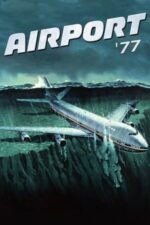Up in the Air: Exploring the Cinematic Obsession with Hijacking
Isn't it fascinating how certain anxieties latch onto popular culture? For a long stretch, particularly from the 60s through the 90s, hijacking was the thing. It wasn’t just a crime; it became a potent symbol of societal disruption, political unrest, and individual desperation – all playing out against the backdrop of increasingly accessible air travel. And Hollywood, naturally, couldn't resist exploring that fear.
Think about it: before 9/11, the image most people had of terrorism in flight was shaped by films like Airport '77. That film, with its crash landing in the Bermuda Triangle and passengers battling dwindling oxygen, tapped into a primal dread – being trapped, vulnerable, and utterly at the mercy of forces beyond your control. It’s a feeling that resonates even today, despite how outlandish some of those older scenarios might seem now.
The appeal wasn't just about thrills (though there were plenty!). Hijacking offered filmmakers a unique stage for exploring broader themes. Skyjacked, for example, delves into the psychological fallout of war and the potential for ordinary people to be driven to extreme acts by trauma – a surprisingly nuanced take on what could easily have been a purely action-driven plot. It’s interesting how often these films try to humanize the hijacker, even if only slightly, forcing us to confront uncomfortable questions about their motivations.
Then you've got films like Ransom, which shifted the focus from individual desperation to geopolitical tension. Suddenly, it wasn’t just a plane; it was a symbol of national security and international relations. The stakes were raised exponentially, reflecting a growing awareness of global interconnectedness – something that felt very new back in the 90s.
Even more recent entries like Turbulence 2: Fear of Flying (yes, I know, it's a sequel!) continue to play with the formula, often adding a "heroic passenger" element – someone who’s secretly qualified to save the day. It’s a satisfying trope, offering a glimmer of hope amidst the chaos, but also speaks to our desire for agency in situations where we feel powerless.
What's striking is how the anxieties reflected in these films have evolved alongside real-world events. The initial focus on individual acts of desperation has broadened to encompass larger political narratives and even, occasionally, a touch of darkly comedic absurdity (though I’d argue those attempts often fall flat!).
It's worth noting that the prevalence of hijacking as a cinematic trope has largely faded since 9/11, understandably. The reality surpassed the fiction in ways that made exploring it on screen feel… complicated. But revisiting these films offers a fascinating glimpse into a specific moment in our cultural history – a time when the sky felt both limitless and terrifyingly vulnerable.
So, next time you're looking for something a little different, give one of these a spin. You might be surprised by how much they still have to say about fear, resilience, and the enduring power of cinema to reflect (and shape) our anxieties.




































